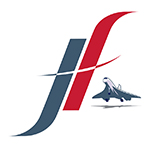A gift for all flight Instructors – anywhere
One of my favourite authors, the American pilot Richard Bach (Gift of Wings, Biplane, Illusions and many more) stated, beautifully:
‘Learning is being reminded that you know something; Doing is demonstrating that you know it; and Teaching is reminding others that they know, also.’
It’s been said, ‘there is nothing more perfect than an idea whose time has come’. However, change in any person or organisation – let alone an industry –can be regarded either as a threat – or as an opportunity.
I would invite you to regard this as a golden opportunity for the industry – and a major gift for you, both personally and professionally. This is a valid toolkit that you can add to your skillset as an instructor, yet one that has benefits for the rest of your own flying careers.
You may be considering the decision to embrace my Jacobson Flare, the world’s first and only universal, quantifiable and unassailable approach and landing training technique.
You may also have never heard of it – until now.
Either way, please, be assured that your experience and qualifications to date are very much respected and valued; your instructing skills and talents are not in any way in question – though you have probably continued to learn and to grow in the role, as many others have done.
Richard Bach also wrote: ‘There is no problem, without a gift for you in its hands.’
 Any training organisation and every instructor and teacher must, from time to time, re-evaluate what they teach and how they teach it. I feel certain that somewhere, sometime, you must all have wondered if anyone else felt, as I did in 1965 and then knew by 1985, that the landing manoeuvre was the most neglected and non-standardised sequence in the whole flight training syllabus.
Any training organisation and every instructor and teacher must, from time to time, re-evaluate what they teach and how they teach it. I feel certain that somewhere, sometime, you must all have wondered if anyone else felt, as I did in 1965 and then knew by 1985, that the landing manoeuvre was the most neglected and non-standardised sequence in the whole flight training syllabus.
We’ve all wondered why the landing is sometimes difficult to learn and even more difficult to teach. I believe it is because, for nearly 100 years until 1987, there has been no underlying framework.
My original idea, inspired by the RAF 617 Sqn ‘Dambusters’ of 1943, was simple: apply triangulation to apply a fully visual fix to the landing flare point, instead of a guess of vertical height. Turns out, it worked, but it’s become just a part of something much more than that.
I was seriously encouraged to research and develop an explanation for what I had observed for 20 years. I wrote a paper in 1987, for an aviation conference and, over the intervening years, developed what is now known as the Jacobson Flare. The explanation is still very simple but is now a complete approach and landing system: a defined and visible eye path, from joining final approach, right through to touchdown, easily applied to any fixed-wing aeroplane. It’s predictable, consistent, universal and fully quantifiable.
Somebody once said, ‘There are 3 or 4 things that a pilot must know, to land ANY fixed-wing aeroplane consistently well. Unfortunately, no one knows what they are!!’
Well, I contend that there are actually 5 things and I can share them with you, right now: 
- Where to aim?
- How to aim?
- When to flare?
- How much to flare? And
- How fast to flare? (i.e., the flare rate)
Now, I don’t know of ONE reference book or training manual, (not even from the manufacturers such as Airbus and Boeing, or ANY airline), that answers even ONE of those questions, let alone all five. Remember, I’m speaking of ANY fixed-wing aircraft, sailplane to the A380! The Jacobson Flare answers every one of these questions, simply, factually and accurately. The mathematically based arguments are unassailable.
Much more information can be found on www.jacobsonflare.com and it would be great if you would be prepared to do a little research, after reading this. I commend the About and Testimonials tabs, the JF App Preview video and the Jacobson Flare LITE. This is all about sharing information, finessing landing instruction and providing cost-effective training for your students, while minimising wear and tear on aircraft and greatly increasing competency and safety levels.
With respect to competency levels, we even have a means of measuring your students’ levels of competency – not only in the approach and landing, but for all sequences.
Finally, for any further information, you are most welcome to contact me, via these contact details.
Wishing you many safe landings
Captain David M Jacobson FRAeS MAP
Would you care to experience that unsurpassed sense of accomplishment, derived from executing consistently beautiful landings, more often?
For starters, Download the FREE Jacobson Flare LITE, our no fuss/no frills introduction. Here we demonstrate, step by step, the application of the Jacobson Flare on a typical grass airstrip at Porepunkah, YPOK.
We invite you to browse the consistently positive comments on our Testimonials page. Many pilots, of all levels of experience, have downloaded our Apps. Read about their own experiences with the Jacobson Flare technique and the App.
Then download the COMPLETE Jacobson Flare app – for iOS. You’re already possibly paying $300+/hour to hire an aeroplane: You’ll recover the cost of the app, in just ONE LESS-NEEDED CIRCUIT. Moreover, you’ll have an invaluable reference tool, throughout your entire life in aviation.
Download the COMPLETE Jacobson Flare App for iOS devices now.
We invite you, also, to review our new, FREE companion app,
offering a convenient way of staying abreast of our latest blogs.
Download the Jacobson Flare NEWS App for iOS devices now.










